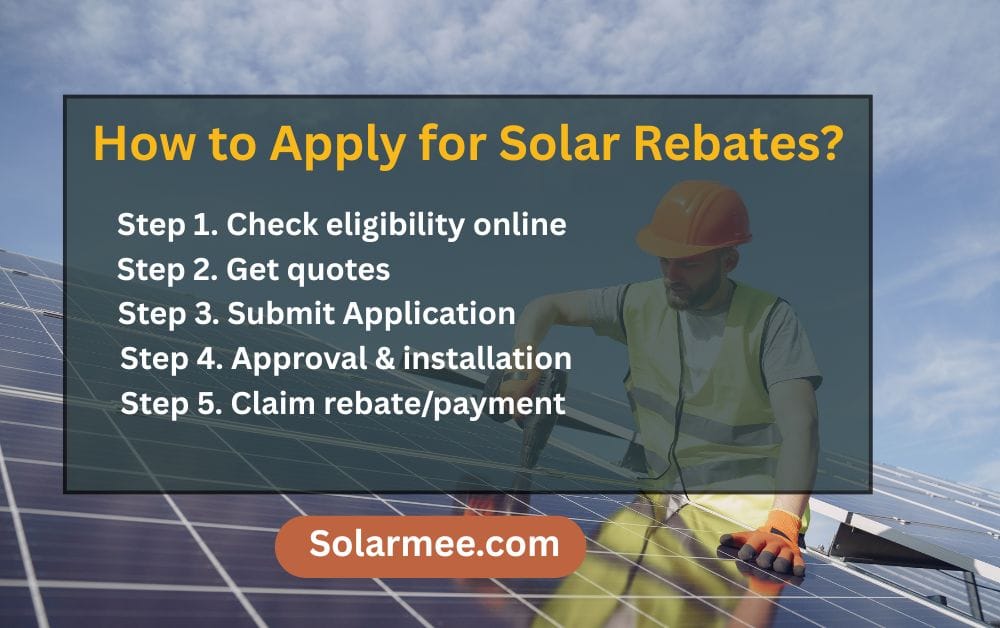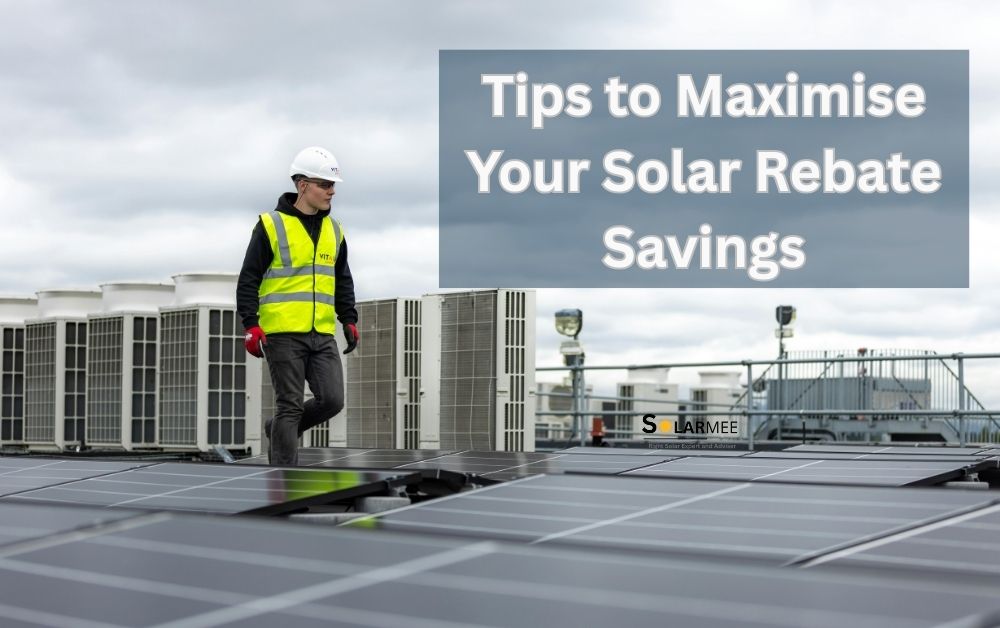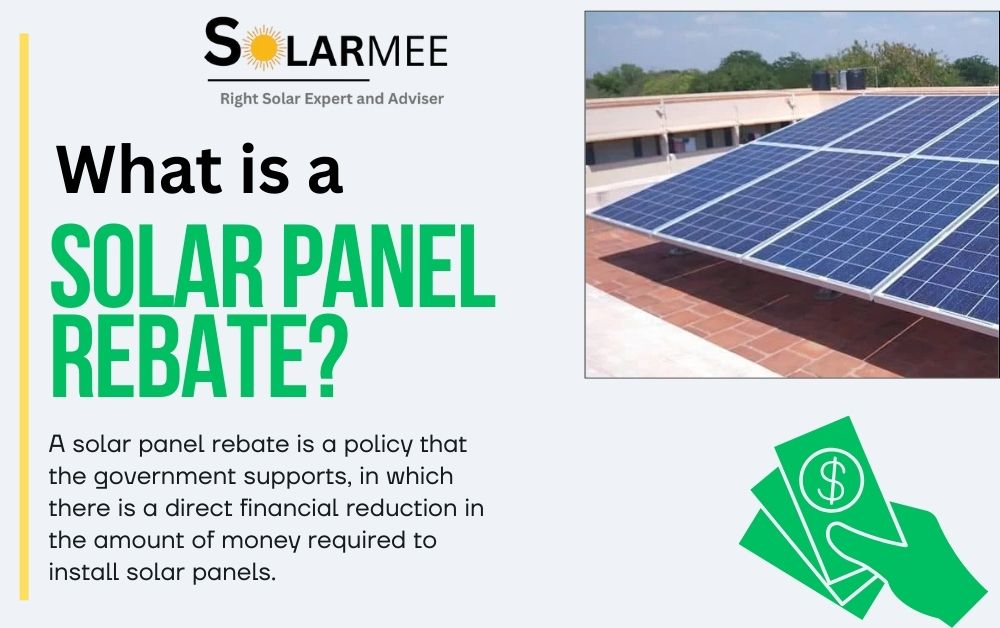A solar panel rebate is a policy that the government supports, in which there is a direct financial reduction in the amount of money required to install solar panels on a home or business premises. In simple terms, as you buy solar panels, a part of the funds is offset by the rebate; thus, the system is cheaper at the very outset. This incentive is essential to the Australians, as it helps them to have a shorter payback period and reduce the obstacles faced by homeowners and companies to move to renewable energy.
Such rebates are largely supported by the federal Small-scale Renewable Energy Scheme (SRES). In the case of solar installation, small- to medium-sized households and businesses are eligible to receive Small-scale Technology Certificates (STCs) that are automatically redeemed as a credit to the system cost—no cashback waiting. The solar panel rebate government initiative provides the opportunity to access the savings by having coverage of systems installed by approved professionals using certified equipment.
In other words, what is a solar rebate? It is a means through which the government can provide clean energy at a subsidized price across homes and enterprises in the entirety of Australia.
Understanding Solar Panel Rebates
A solar rebate is a government subsidy that literally covers the initial cost of installing solar panels for any household or business. Formally, it is provided as a part of the solar rebate program by means of Small-scale Technology Certificates (STCs) that automatically reduce the cost of installation, with no cashback or paperwork required.
An instant discount is a rebate (as in the STC program). An incentive may be in the form of rebates, feed-in tariffs, or even support. A tax credit (which is more typical in the US) saves you money in taxes, whereas Australian solar rebates save you money on the cost of buying the system.
The solar rebate 2025 lasts on the basis of federal and state programs and will slowly phase down over the years up to 2030. The future projections are towards the minimization of values and the expansion of support for batteries. Knowledge of what the government solar rebate is can guide Australians to take immediate action and maximize their savings before the incentives are reduced.
Also Read: Solar Power Government Rebate Sydney
Types of Solar Panel Rebates
| Type of Rebate | Details | Applies To | One-Time or Ongoing |
| Federal Government Rebate | Upfront discount via Small-scale Technology Certificates (STCs); applied at purchase. | Homeowners, Businesses | One-time |
| State or Local Government Rebate | An extra rebate or subsidy offered by state/city councils on top of the federal scheme. | Homeowners, Businesses | One-time |
| Business Solar Rebate | Federal and state rebates plus tailored grants for offices, factories, and retail. | Businesses | One-time |
| Homeowner Solar Rebate | STCs and any regional rebates for residential properties. | Homeowners | One-time |
Who is Eligible for Solar Panel Rebates?
Solar panel rebates are based on a number of criteria to qualify. It means everything to your location, because rebates differ according to state and postcode. The solar system should have a size criterion of 1 kW to 100 kW, depending on the household requirement, and more for commercial installations. Rebates are only given on systems installed by qualified, accredited professionals by the Clean Energy Council to guarantee safety and legality.
Residential eligibility is limited to owner-occupiers, some landlords, and approved renters. Rebates available to small and medium businesses include commercial-specific solar grant programs (such as the federal STC and state-specific business grants).
One of the legends is that rebates are only available to homeowners or very small systems; the fact of the matter is that solar rebates on businesses and solar rebates on homes are both available to all types of properties.

How to Claim a Solar Panel Rebate
- Select a certified installer that is accredited by the Clean Energy Council (CEC). This provides you with rebates on your system.
- Prepare necessary documentation, including evidence of purchase, installation certificate, and warranty details. They are normally provided by your installer.
- Make an application online or offline using the concerned government portals (federal or state) and upload your papers and application form.
- Wait to be approved—depending on the scheme, this may be a number of days to a number of weeks.
- Get a rebate or discount—most federal rebates are offered through an initial discount on your installation bill, but others are offered as a cash rebate.
Hints: Do not waste time; check the eligibility before the installation, employ certified companies, and provide full documentation.
Benefits of Solar Rebates for Homeowners & Businesses
You need to be eligible based on where you live, the scale of your system (typically less than 100 kW in homes), and the installers to be used, who are Clean Energy Council (CEC)-accredited. These rebates can be offered to both small businesses and homeowners.
Homeowners and renters who are allowed to do so often qualify as residential, and businesses can enjoy special business programs. There are many myths that it is only homeowners or small systems that are eligible; however, it is generally more applicable to both homes and businesses.
It is significant to check the option of whether one is qualified to get a solar rebate regularly because the requirements might vary with time. By taking advantage of the solar rebate on business or the solar rebate on home program, one can achieve substantial cost reductions and encourage the use of renewable energy.
Common Challenges & Misconceptions
The most frequent misunderstandings and misconceptions regarding solar panel rebates are the fact that there is no idea that they will reimburse 100 percent of the cost of the system; actually, they will only save part of the cost. Some applicants have to go through paperwork and eligibility criteria that may delay or reject their applications.
The other problem is that the rebate policies keep fluctuating regularly by the state or government, and it is difficult to keep up. The presence of the aforementioned concerns notwithstanding, solar rebate schemes can still serve as a worthy incentive towards the adoption of clean energy.

Tips for Maximizing Your Solar Rebate
- Select a solar installer that is accredited by the Clean Energy Council (CEC) to be eligible to obtain rebates.
- Collect all the necessary documents: purchase evidence, installation certificate, invoices, and warranty information.
- The rebate application can be made online or offline through the concerned government rebate portal.
- Make sure that your application is filled out properly and correctly to save on delays and rejection.
- Email, follow up, monitor your application progress, and proactively follow up in case of delays in approval.
- Make a timely application to prevent late rebate funding applications and policy changes.
- Ensure that your system and your installer are fully compliant with the government specification and certification requirements.
Solar Rebate Programs in 2025: What to Expect
Solar rebate schemes in Australia will undergo major changes in the year 2025 to promote the use of clean energy. The federal Cheaper Home Batteries Program will provide up to 30 percent off battery costs, which should be an improvement in rebates to homeowners and businesses alike, particularly battery storage systems. These incentives will help minimize initial costs and seek grid stability by means of virtual power plants.
Although the rebate values will decline slowly up to 2030, the idea of combining state and federal programs will still work. Renewable incentives have a bright future that will help Australia reduce carbon emissions and achieve cheap, clean energy.
Also Read: Solar Power Government Rebate Melbourne
Conclusion
Solar rebate is a government subsidy that reduces the initial installation price of solar panels, and thus, the installation of clean energy becomes affordable to households and companies. This is important as it reduces the payback periods and promotes the use of renewable energy, which is good in terms of the environment and the pocket.
In order to begin, ensure that your eligibility is verified and apply early enough to ensure the availability of the rebates. To ensure a highly professional direction and get the most savings, call solarmee.com and take one sure step to energy sustainability.

I am Vanshika, a passionate writer, digital marketer, and explorer of ideas. With expertise in SEO, social media, content creation, and website design, I combine creativity with strategy to deliver impactful digital solutions. Writing is my way of sharing knowledge, sparking curiosity, and building meaningful connections with readers. Through my blog Vanshi’s Exploration, I share unique insights on finance, travel, technology, and future-forward thoughts that inspire and inform.




